Striped Bronzeback Snake
The Striped Bronzeback Snake (Dendrelaphis caudolineatus)
Dendrelaphis caudolineatus is also known as the Striped Bronzeback. It is a colubrid non-venomous snake. The snake is one of the most popular pet species. However, it tends to live longer when released into the wild.
D. Caudolineatus is a small and thin snake. It can reach a maximum length of 180 cm, but most are around 140 cm.
Males tend to be slimmer and have more vibrant colours than females. These can range from a reddish brown or chestnut colour, up to a bronzey hue. Females are generally duller, larger, and more passive.
It is mostly arboreal, but rarely reaches heights above 4 meters. It can be found in open areas or on grassy plains. Its habitat spans a wide range of environments, from coastal lowlands up to mountainous areas at 1500 meters elevation. Its main diet is lizards, tree frogs and other lizards.
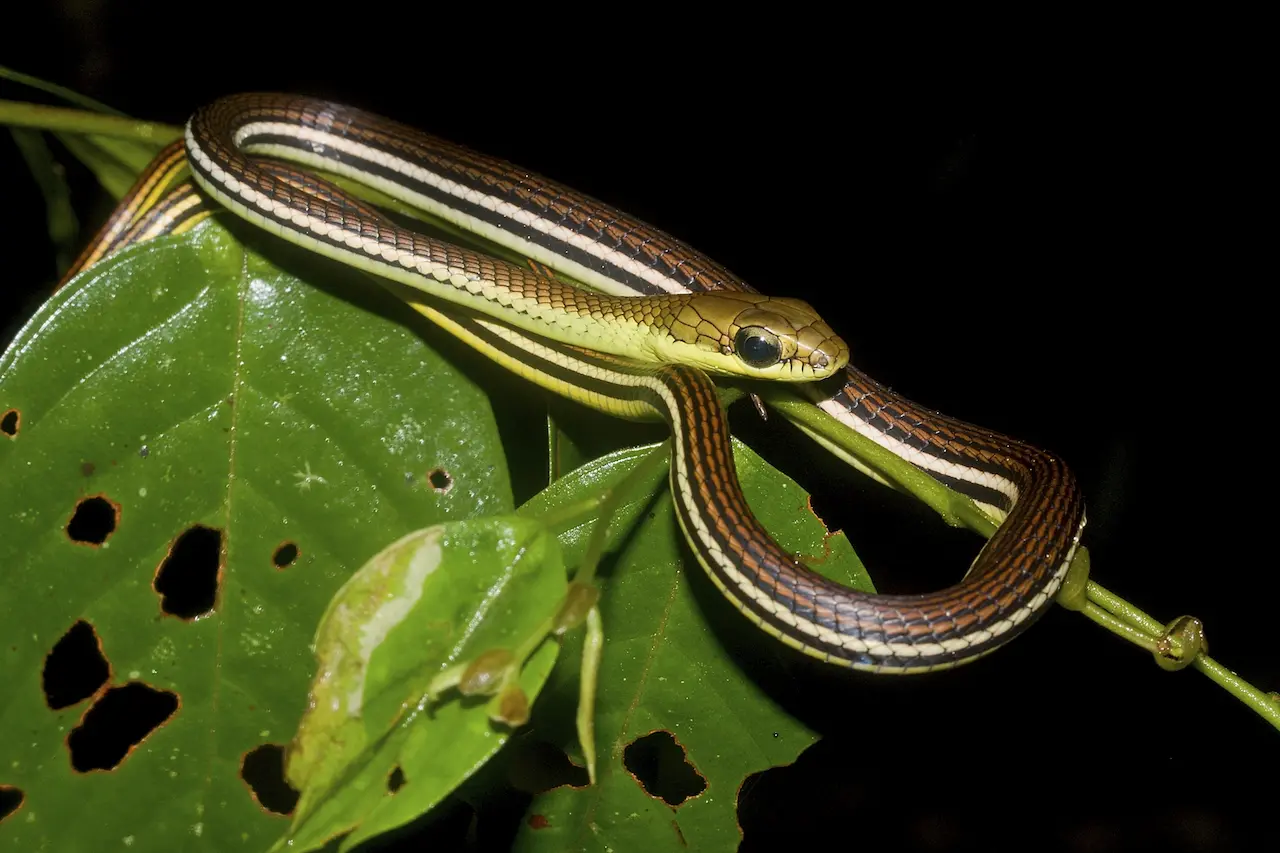
Thai:
(Ngu Sai Man Daeng Lang Lai)
Length:
Up to about 1.5 meters. The males are a bit more red on top and slightly thinner.
Range:
The Striped Bronzeback is found in southern Thailand through the Malaysian Peninsula, and to Singapore, Sumatra, Java, Borneo, and the Philippines. The snake shown here was caught in Tub Kaak, Krabi Province in southern Thailand.
Habitat:
Striped Bronzebacks ( dendrelaphis caudolineatus ) can be found most often in forests, especially in areas with nearby water sources, such as seasonal pools, streams, and ponds. The environments provide not only humidity and cover, but also populations of their main prey – lizards and tree frogs.
Striped bronzebacks can be seen climbing through low shrubs and vegetation, but they also descend to the ground when hunting, particularly for terrestrial lizards. The striped bronzebacks are often seen at forest edges where sunlight and dense foliage meet, providing both hunting and basking grounds.
They can be found in various altitudes but are primarily considered to be a Lowland species. The majority of sightings occur below 800 meters. They have also been found at elevations as high as 1500 meters. This indicates a certain degree of ecological flexibility.
Active Time:
Diurnal – daylight.
Food:
Frogs, lizards, and some say small birds in the nest.
Defensive Behaviour:
A quick bite – coiled beforehand, or not. I was bitten when I grabbed his tail when I first saw him. I expected it. He caused a little blood on the top of my pointer finger by the big knuckle. There are a couple of small bumps there now. I experienced no serious symptoms.
Venom Toxicity:
No venom. No danger.
Offspring:
Same in body shape and pattern/colouration as adults.
Notes:
Striped bronzeback snakes are somewhat larger than the other bronzebacks and can get up to about 1.5 meters. The one in the photo and video below was caught at about 300 meters elevation (900+ feet) on a fallen tree. I stepped over the tree, and the snake fell to the ground and attempted to hide under another rotting tree stump.
I had to decide in about 1 second whether the snake was venomous and whether I could step lightly on his tail to stop it from disappearing. I saw the tell-tale head shape and stripe down the side and knew it was a bronzeback, but there are about 6 species of bronzeback in Thailand. I hadn’t caught one of these until today.
These snakes are diurnal – active during daylight hours and are excellent climbers, as all bronzebacks are. They are twitchy snakes, and this one bit me when I first grabbed him. I had to pull him off my index finger slowly to prevent injuring him. He bit down hard for his tiny size (about 10 inches). These snakes love frogs and other small animals – geckos included.
This species of bronzeback has a black stripe on a light background running from its neck to its tail. The belly is white or yellowish. This snake does not have the stripe across the eye like some of the other bronzebacks. The top of the head is brown – bronze colour, as is the top of this snake’s back.
The eye is large, like a rat snake, and the head is long, almost like a whip snake, but wider in comparison to the body. Unlike other bronzebacks, the vertebral scales are not enlarged but are narrow in shape. Its lower cheeks and lips are pale yellow with small black marks or stripes running vertically near the snout.
Striped Bronzeback Scientific Classification:
Kingdom: Animalia
Phylum: Chordata
Class: Reptilia
Order: Squamata
Suborder: Serpentes
Family: Colubridae
Subfamily: Colubrinae
Genus: Dendrelaphis
Species: D. caudolineatus
“Dendrelaphis caudolineatus“
(Discovered by Gray in the year 1834)
Striped Bronzeback Snake Video:
- Common Non-Venomous Snakes Post #1 Post #2
- Brahminy Blind Snake
- Brown Kukri Snake
- Copper-Headed Racer / Radiated Rat Snake | IndoChinese Rat Snake | Oriental Rat Snake / Banded | Red-Tailed Racer | Ridley’s Racer | White-Bellied Rat Snake
- Dragon Snake
- Laotian Wolf Snake
- Malayan Bridle Snake
- Orange-Bellied Snake
- Red-Tailed Pipe Snake
- Reticulated Python | Blood Python | Burmese Python
- Striped Bronzeback
- Sunbeam Snake

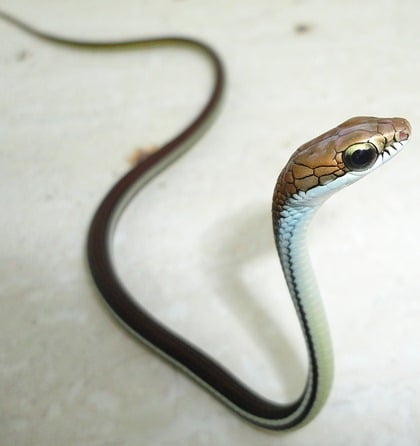
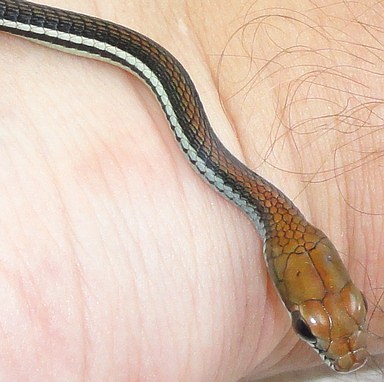
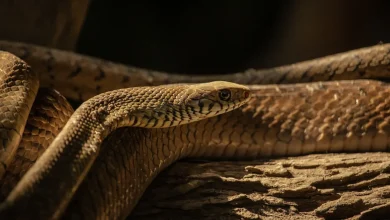
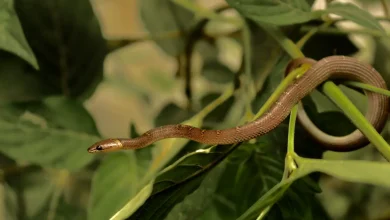
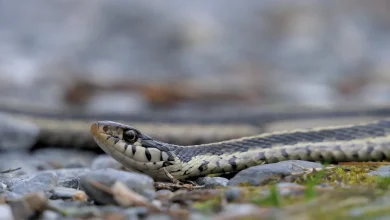
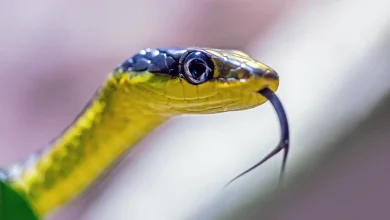
I found a small (15cm) specimen in a young pawpaw tree in our garden today. Appeared very relaxed, not scared, altho its little red tongue was busy, constantly flicking. I was able to caress/stroke its underside, first 5cm back to its underjaw, with my pointing finger without it offering any threat behaviour. While looking for a container/bag to put it in it disappeared. I’m going to have to carry a camera – and a decent bag – in the garden in future. I keep several scorpions but some local snakes would add interest to the display. There seems to be plenty of new-born frogs around the place at present (towards end of wet season), snakes won’t be far behind.
..Striped Bronzeback Tree Snakes doesn’t want to be held in the tail, they hate even the slightest pressure. They prefer to be picked up in the mid portion of the body. Sometimes they still insist so better use a snake hook or a stick when picking them up before holding them by your hand. Most captives from the wild will continue resisting so if you really want to hold them better pin their head on the ground with enough pressure by using a snake hook or a stick then by your hand pick them up gently by the neck (right after the head) supporting the back of the head by your pointer finger, then pick the mid portion of the body by your other hand. Thanks sir & peace to all. ..let’s love nature
Any one identify this shredding belongs which snake,I will send images.